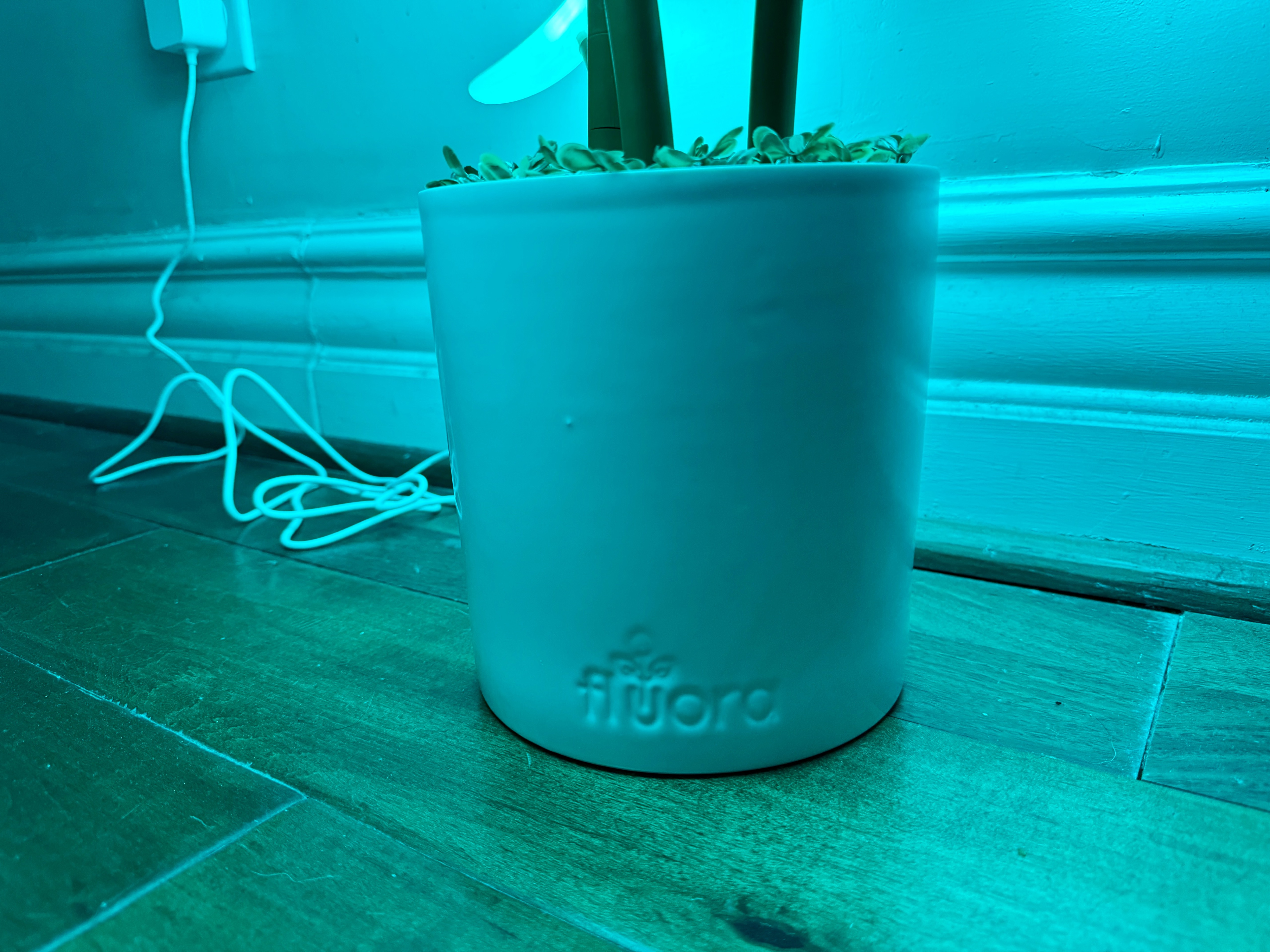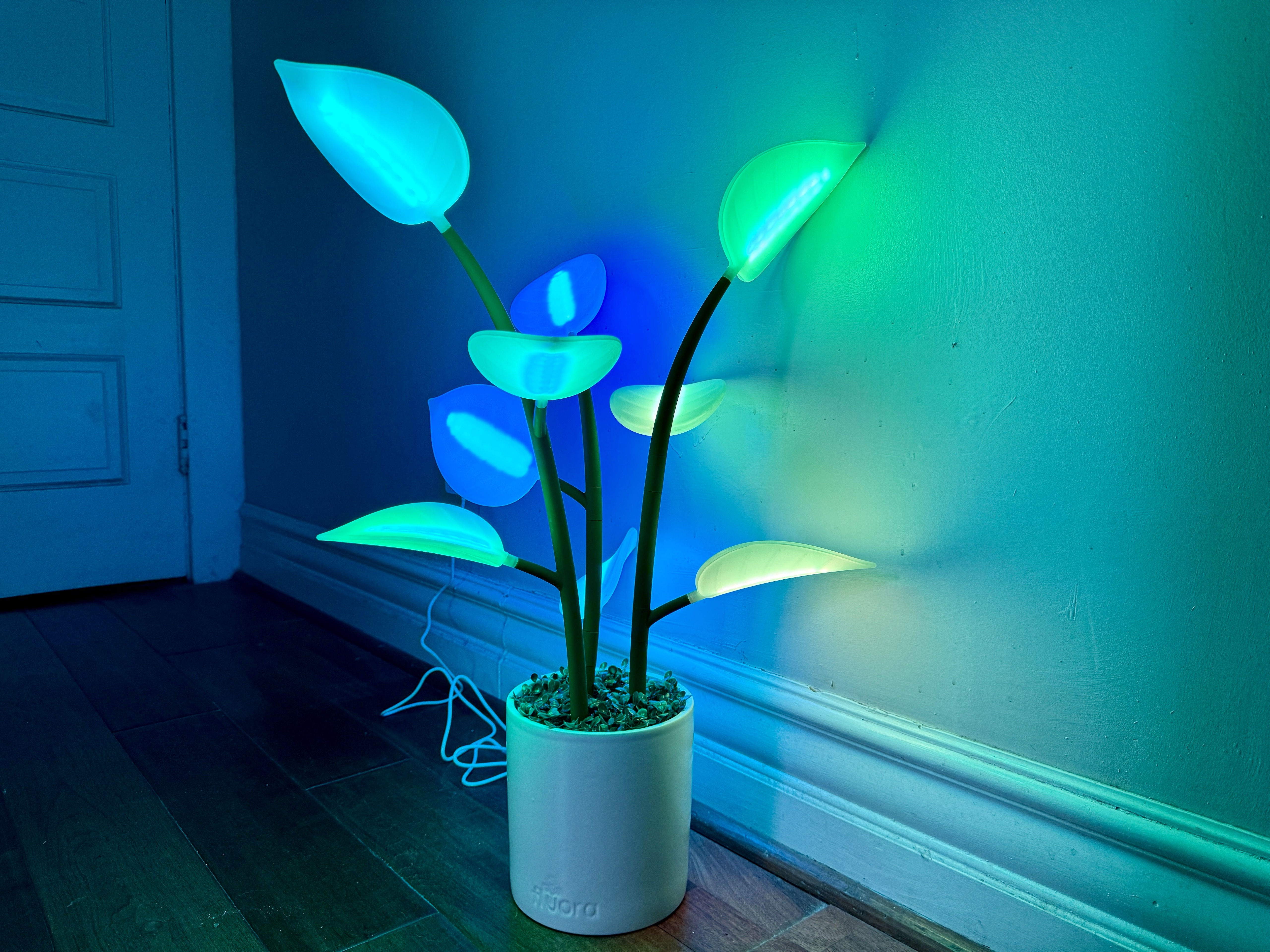
I’ll be honest with you — I don’t have much of a green thumb. I’ve tried to keep flowers alive for at least a week when I am gifted them, but they don’t seem to last more than a few days. I’ve tried to keep the front lawn of my house watered, but that doesn’t always happen every day due to me doing everything else that needs to get done and just being tired.
I do love having plants for decor, but again, dead plants don’t look great. That’s why I tend to lean toward fake plants because, well, they aren’t alive to begin with, but they certainly look the part.
When I first heard of Fluora a few years ago, I was intrigued because it was a smart house plant. Smart, as in, it’s literally a fake plant that lights up and is more like an art piece. But at $500, it certainly costs a hefty chunk of change.
Fluora released the Fluora Mini recently. It’s basically a smaller version of the original Fluora, and it’s also half the cost. So, is the Fluora Mini worth picking up?
An interesting piece of decor

The Fluora Mini arrived in multiple pieces, but it’s very easy to set up. You have a ceramic pot that’s pretty much the brains of the smart plant, as it houses all of the precious electronic components inside. There’s a layer of fake moss to cover up the top of the pot a bit so that it looks like an actual plant, which is clever.
The stems and leaves are separated, but they’re easy to put together. I plugged the stems into their appropriate holes in the pot and then put each individual leaf on the stem. For the Fluora Mini, there are nine leaves in total.
I did have some issues with one of the stems not being fully plugged in at first, despite it feeling like it was. It’s a bit tricky since the moss layer can make it a little hard to see, but I just wiggled it around a bit until it was aligned properly.
You get a power adapter in the box, and it connects to the bottom of the ceramic pot. Once it’s plugged in, the leaves should start lighting up, which is an indicator of whether or not the stems are properly connected. This was how I learned that one of my stems wasn’t aligned right, and I was able to figure it out after one or two power cycles.
Once you connect the Fluora Mini to your smartphone (I used my iPhone 15 Pro) through the companion Fluora app and Wi-Fi, you can set it to three settings: Auto, Scene, or Manual. Auto is the default setting, which cycles through a spectrum of colors for the leaves. Even if you never use the app again and just have it on the Auto setting, it still adds a nice touch to your home.
Scene features different preset scenes, which you can tweak to your own preferences by selecting the Wrench icon, though I have just left them on the default settings. The current scenes in the app are Party, Chill, Focus, Bedtime, and Awaken.
My favorite of these is Party, as it’s bright and vivid and goes through the colors at a pretty good pace. I also like Bedtime for a slow transition between blue and pink shades at night, which is calming. Focus just gradually cycles through the colors, which I also enjoy.

Lastly, the Manual setting lets you set a single color and saturation level, as well as brightness. But you can also open up the Control Panel, where you can choose a light setting and make further adjustments like cycle speed and size (for specific ones like Snakes).
Since the Fluora is like an art piece, it looks best on a stand. Fluora sells a short rustic wooden stand, or you can get a taller mid-century wooden stand. Or, you know, you can just pick up any small kind of stand you want at a store. I was only sent the Fluora Mini itself, so I have placed it on the floor in the small hallway of my home — I’ll probably get a stand later.
Not the best app experience

Though the iOS app works, it’s not the best experience and feels more like an afterthought in some ways.
For example, the app will tell me that there is a firmware update that is required, but when I select the button to update, it doesn’t seem to actually do anything. It just keeps telling me I need to update the firmware in an endless loop until I select “Ignore” and then carry on like normal. And since I ignored it, then I can’t find the option to try updating the firmware again later — it just randomly pops up sometimes when I open the app.
I also wish that there was a way to create your own scene. It seems that, at the moment, the app only has five presets that you can adjust, but you can’t add any new ones from scratch. Hopefully, this kind of feature will be added in a future update.
I’ve chosen to leave my Fluora Mini on most of the time, but the app lets you create a schedule if you prefer to have it come on and turn off at a certain time. It also has a setting that has the plant automatically turn on using light sensors when it detects the room’s light level is darker.
I’m also a bit surprised that there doesn’t seem to be any HomeKit or other smart home integration. It acts as a piece of standalone light decor, but it feels like it could benefit from other smart home accessories if those are set up in your home (I lack the smart home stuff).
A fun little decoration for any house

The Fluora Mini is a nice addition that will liven up any room in your home. It is super simple to set up, though it might be a little tricky to make sure the stems are properly in the sockets.
If the regular Fluora is a bit too steep in price and size for you, then the Fluora Mini is a great alternative. The size is also more manageable in smaller spaces, but it definitely would look nicer on a stand than just on the floor. I’ll be shopping around for a good stand to place mine on, but for now, it still lights up my hallway nicely.
The Floura Mini is available for preorder now for $249 and will begin shipping in April.











